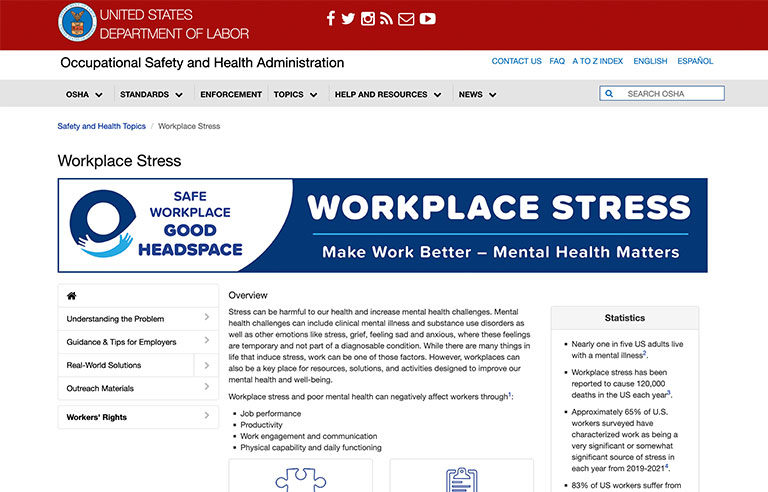Workplace stress and mental health: OSHA launches webpage

Photo: osha.gov
Washington — A new webpage published by OSHA is intended to help employers and workers manage workplace stress while maintaining mental health amid a shifting work climate.
According to NIOSH, nearly 1 out of 5 U.S. adults live with a mental illness. World Health Organization data shows that 83% of U.S. workers experience work-related stress, while 54% find that work stress affects their home life.
“Stress can be harmful to our health and increase mental health challenges” that range from temporary grief and anxiety to clinical mental illness and substance use disorders, OSHA says. “While there are many things in life that induce stress, work can be one of those factors. However, workplaces can also be a key place for resources, solutions and activities designed to improve our mental health and well-being.”
The webpage features training resources, outreach materials and analyses of real-world solutions, as well as other information.
The agency says employers can help workers manage stress by:
- Being mindful of the unique stressors affecting each employee.
- Identifying factors that may make it harder for workers to get their jobs done and make adjustments, if possible.
- Creating a safe and trustworthy work culture by making sure workers know they aren’t alone, their employer understands the stress they’re under, there’s no shame in feeling anxious and asking for help is important.
- Providing access to supportive services such as coping and resiliency resources, as well as workplace and leave flexibilities without penalty.
“Addressing mental health and stress in the workplace is the right thing to do,” OSHA administrator Doug Parker said in a statement. “Stress is a major determinant of both mental and physical health issues and impacts workplace health and safety.”
Post a comment to this article
Safety+Health welcomes comments that promote respectful dialogue. Please stay on topic. Comments that contain personal attacks, profanity or abusive language – or those aggressively promoting products or services – will be removed. We reserve the right to determine which comments violate our comment policy. (Anonymous comments are welcome; merely skip the “name” field in the comment box. An email address is required but will not be included with your comment.)

